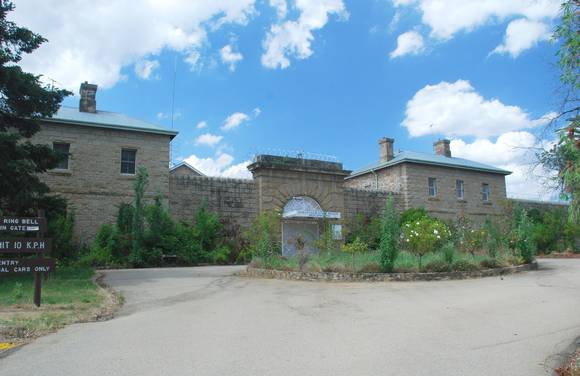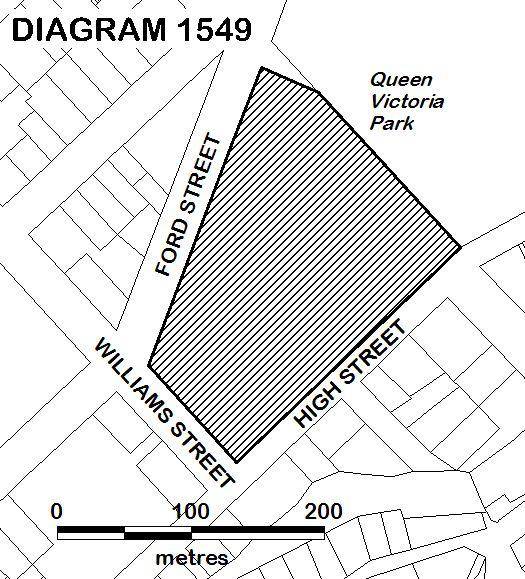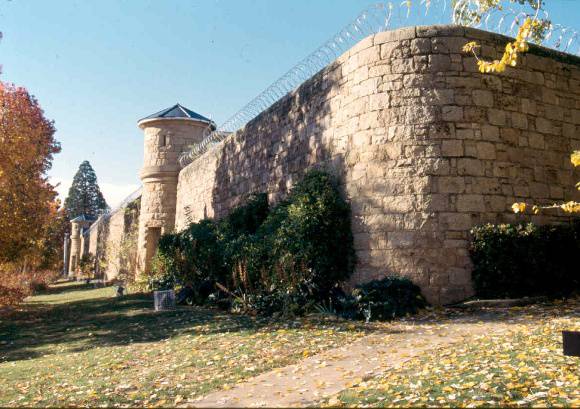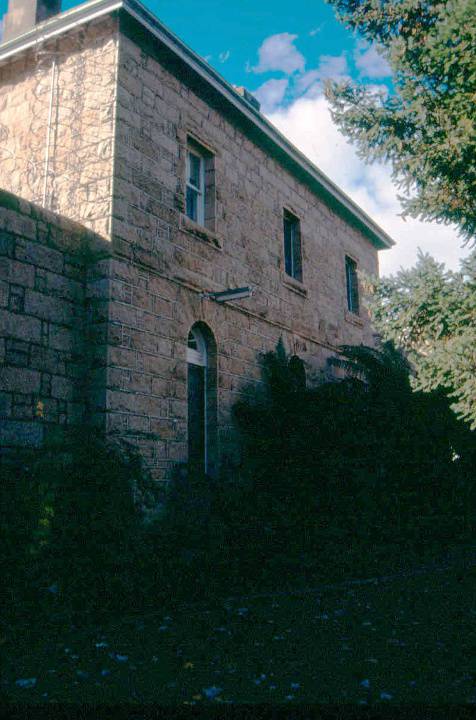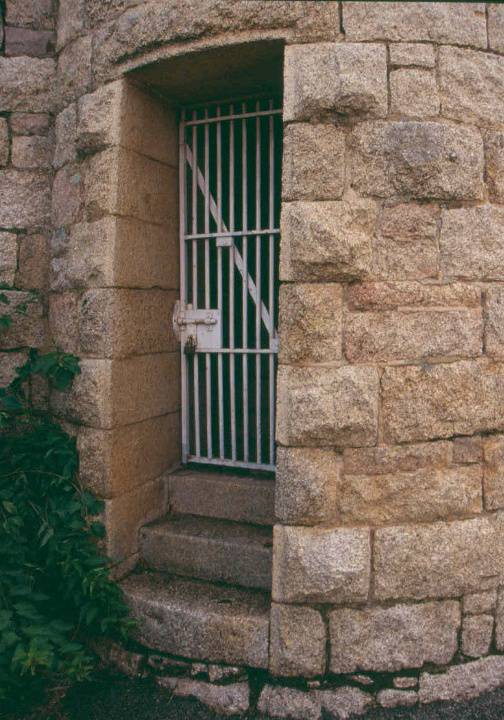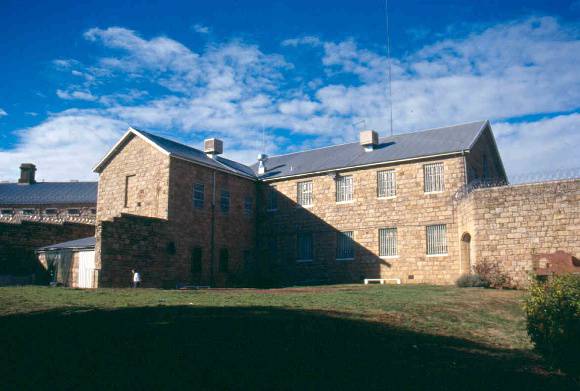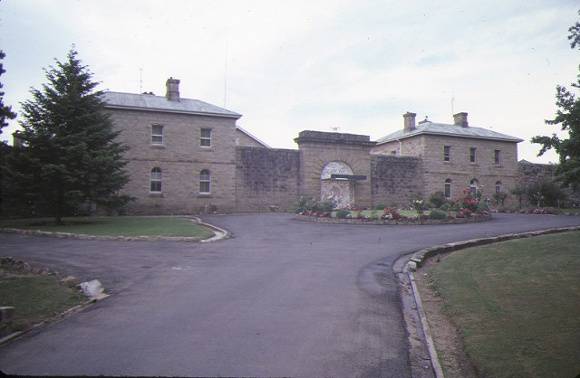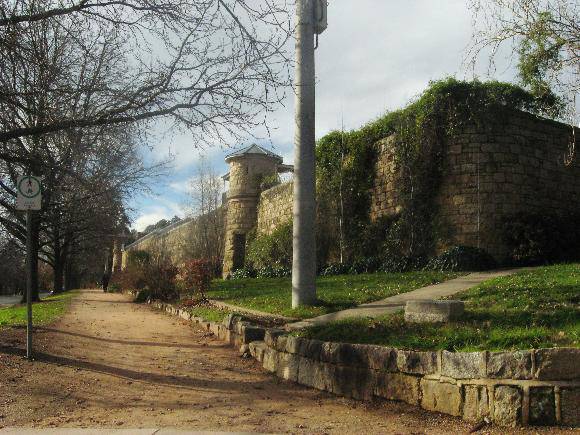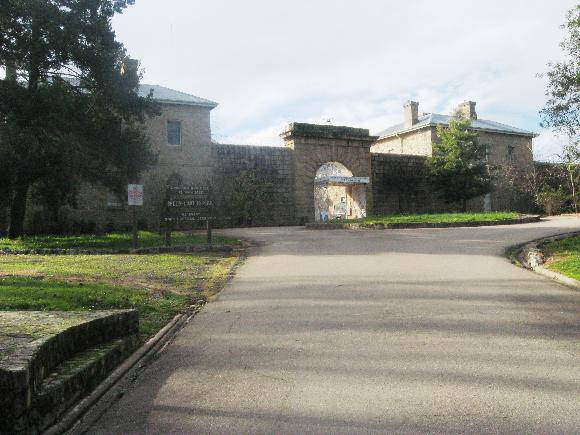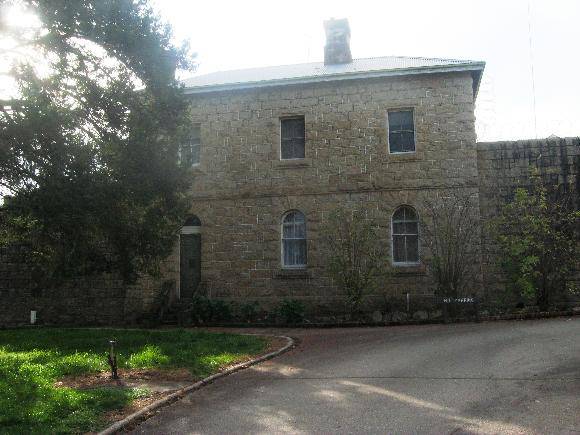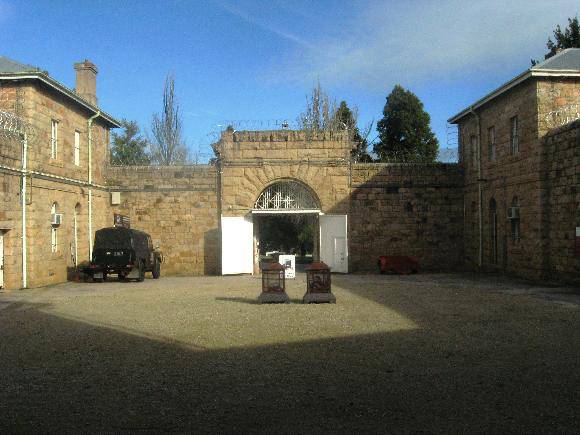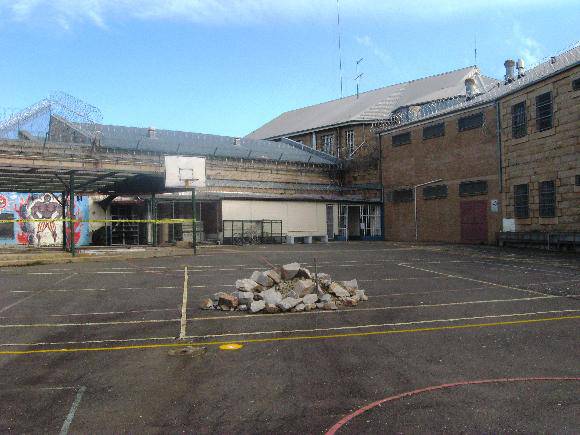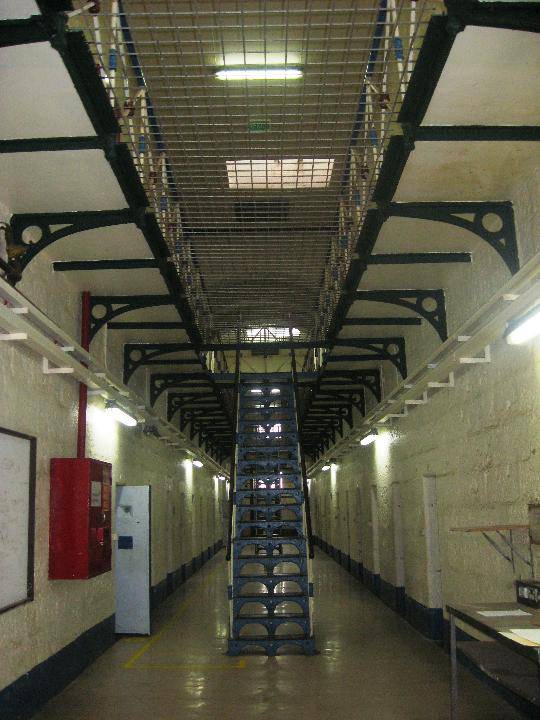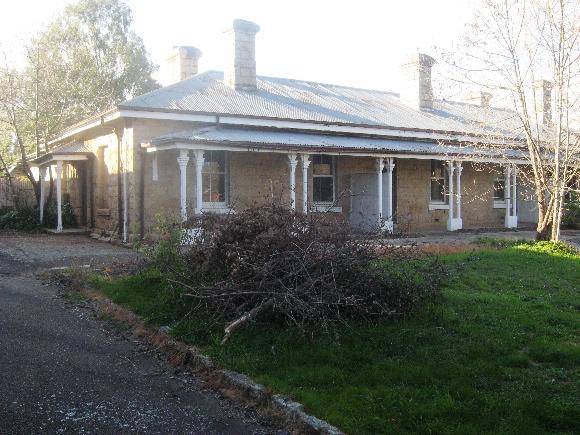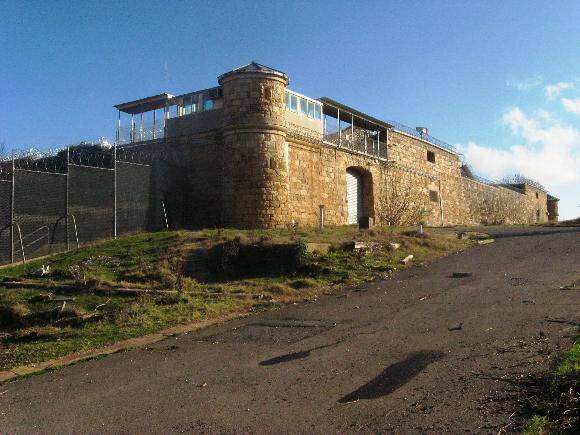| Back to search results » | Back to search page » |
|
FORMER BEECHWORTH GAOL
Statement of Significance
What is significant?
The Former Beechworth Gaol, including: the perimeter walls and watch
towers, the entrance gateways and iron gates; the gaolers quarters and
turnkeys quarters on either side of the entrance; the interior
division walls; the two cell blocks, the central hall, the kitchen
wing, the former dining hall and office wing; the former governor's
residence to the east; the stone quarry at the rear; the front garden;
the external granite retaining walls around the site; and the
archaeological potential, including the nineteenth century burials.
History Summary
A major period of gaol construction began in Victoria during the late
1850s, with nine imposing stone gaols built between 1857 and 1864.
These were all designed by the Public Works Department, and conformed
to a new English concept in prison design, called the panopticon,
where radiating wings of cells could be kept under observation from a
central hub. The gaols were all enclosed by high perimeter walls with
observation towers and stone gateways flanked by staff living
quarters. The Beechworth Gaol was built in several stages, using
granite quarried on the site by prisoners. The panopticon with two
wings of cells, a central hall and a kitchen wing were built in
1859-60, and the gaol opened in 1860 while still incomplete. The
walls, offices, outhouses and staff accommodation were completed by
1864. The contractors were H Dalrymple and George Simmie and the total
cost was £46,763. Conditions were primitive and it was not until 1993
that the cells were provided with toilets and running water. The gaol
has a close association with the Kelly gang, with Ned Kelly imprisoned
there for a total of about two years between 1870 and 1880. Ned's
brothers Dan and James, other members of his gang and his mother,
Ellen, and her new-born baby also spent time there. Twenty-five Kelly
sympathisers were held there awaiting trial, as were Crown witnesses
during committal hearings. Between 1865 and 1881 eight prisoners were
executed at Beechworth, and were buried in unmarked graves within the
gaol grounds. Subsequent executions of prisoners from Beechworth Gaol
were carried out in Melbourne. The coming of the railway in 1876
resulted in many prisoners being transferred to Pentridge rather than
remaining at Beechworth, and by the early twentieth century prisoner
numbers were so low that the government closed the gaol in 1918. It
was renovated and re-opened in 1926 as the Beechworth Reformatory
Prison for hardened male criminals. In 1951 it became the Beechworth
Training Prison, intended for the rehabilitation of younger prisoners.
At that time new facilities for work, accommodation, education and
recreation were added. In 1990 the gaol became the Beechworth
Integration Prison. With the building of a new minimum security prison
outside the town, the gaol was closed in 2004 and sold for private development.
Description Summary
The Former Beechworth Gaol is located in a landscaped setting on an
elevated site at the northern part of the town, and is a prominent
feature in views along the main street from the south. The buildings
are of light-coloured granite. The gaol is enclosed by high walls with
watchtowers and arched entrances with iron gates on the east and west
sides. On either side of the main entrance are two-storey Turnkeys'
and Gaolers' Quarters. Within the perimeter walls are the two
two-storey cell blocks, the dining hall and office wing, all radiating
from a central observation hall. There are further high walls dividing
the gaol internally and forming a number of open yards. To the east of
the perimeter wall is the former Governor's and Warders' Quarters, a
single-storey stone building with verandahs along the east and south
sides. At the front of the gaol is a formal entry forecourt with
landscaped gardens (now deteriorated), driveways and pathways with
stone edgings. Around the site are various stone retaining walls, and
on the northern boundary is the quarry from which the stone of the
buildings was excavated (partly concealed by late twentieth century
buildings). Burials of the prisoners executed at the gaol are probably
located adjacent to the interior of the western wall.
How is it significant?
The Former Beechworth Gaol is of historical, architectural and
archaeological significance to the State of Victoria. It satisfies the
following criterion for inclusion in the Victorian Heritage Register: Criterion A Importance to the course, or pattern, of Victoria's
cultural history Criterion C Potential to yield information that will contribute to an
understanding of Victoria's cultural history Criterion D Importance in demonstrating the principal characteristics
of a class of cultural places and objects
Why is it significant?
The Former Beechworth Gaol is architecturally significant as a
substantially intact example of the panopticon-type prisons erected in
Victoria in the nineteenth century. It demonstrates the restrained
ornamentation and high quality construction characteristic of Public
Works Department buildings at the time. The Former Beechworth Gaol is
a major architectural work of Gustav Joachimi, whose other designs
include the entrance to Melbourne's Pentridge Prison (1858-9, VHR
H1551), Benalla Court House (1864, VHR H1070), and A-Block and J-Block
at Victoria Barracks in Melbourne (1860-7). It forms part of an
important precinct of public buildings in Beechworth. [Criterion D] The Former Beechworth Gaol is archaeologically significant as the
burial place of eight prisoners executed at the Gaol between 1865 and
1881. [Criterion C]
The Former Beechworth Gaol is historically significant for its
association with the major program of prison construction which
occurred in Victoria in c1859-64, when nine new prisons were
constructed around the state, transforming the Victorian penal system.
The Former Beechworth Gaol reflects the great increase in the
population of Victoria after the discovery of gold, and the resulting
increase in crime, especially in the goldfields areas. The Former
Beechworth Gaol is associated with the development of the penal system
in Victoria, having been in use from 1860 until it was closed
permanently in 2004. It demonstrates the conditions under which
prisoners were kept in the mid-nineteenth century, when prisoners were
subjected to solitary confinement in single cells without adequate
lighting, heating, sewerage or running water. The quarry at the rear
is significant as a demonstration of the hard labour carried out by
the prisoners, in excavating the stone for the construction of the
prison and other public buildings in the town. The Former Beechworth
Gaol is a key element in the group of nineteenth century public
buildings in Beechworth, which reflect the role of Beechworth as the
government administrative centre of north-eastern Victoria at the
height of the gold rushes. It is of historical significance for its
associations with the bushranger Ned Kelly, who served a total of
about two years there between 1870 and 1880. Kelly's mother and
brothers and suspected Kelly sympathisers were also held in the Gaol.
[Criterion A]
Group
Law Enforcement
Category
Gaol/Lock-up


